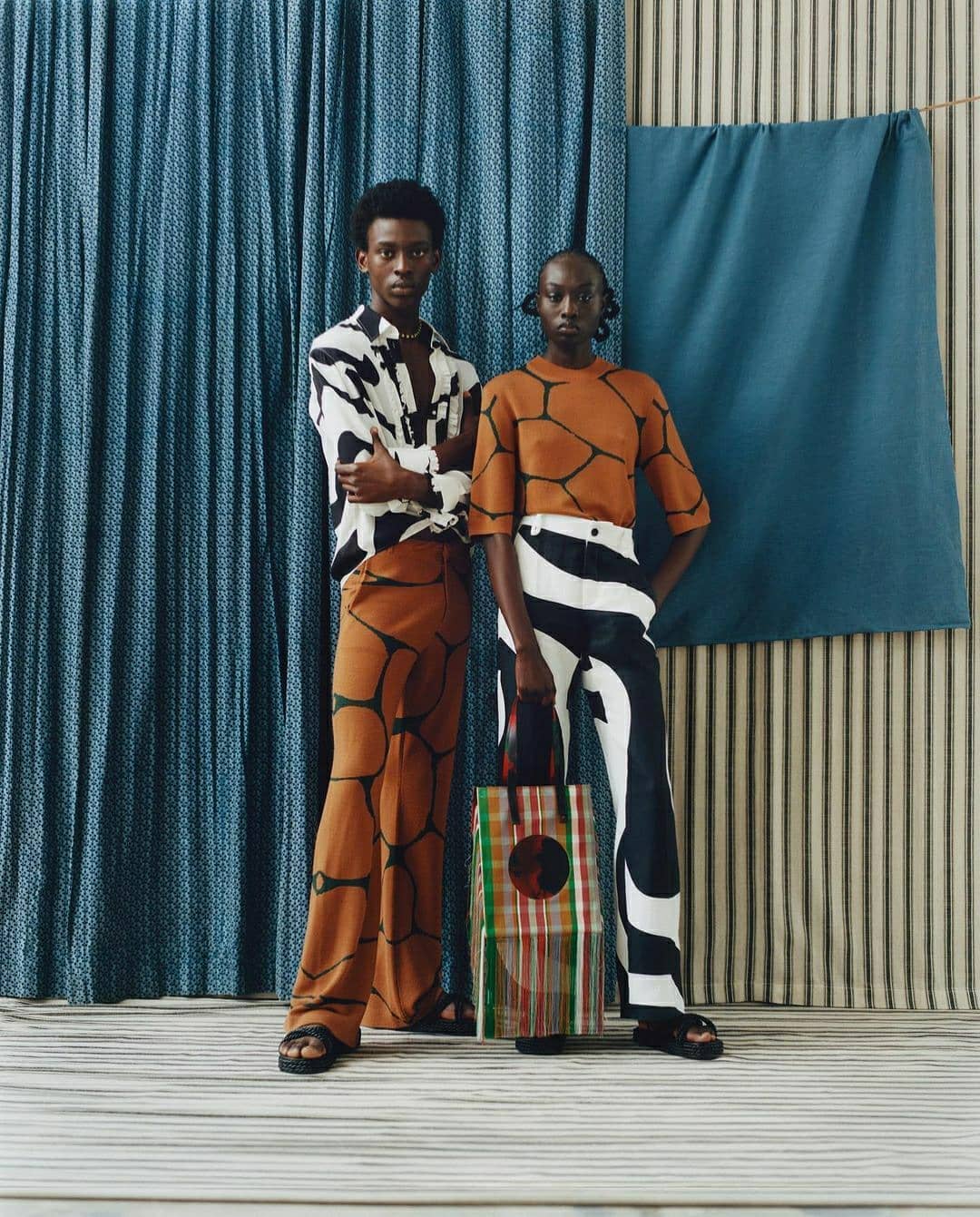
Ghana Must Go: From Market Bag to Runway
Written by: Maryam Opoola

It began not on the glossy pages of Vogue or under the bright lights of Paris, but in the bustling markets of West Africa. A checked plastic “bag”- blue, red, and white - became a lifeline for families carrying their worlds in woven squares of nylon. Known across Africa as the “Ghana Must Go” bag, it was born out of displacement, a vessel of survival, and a silent witness to migration. Few objects have carried such weight, both literal and symbolic, in modern African history. Yet, decades later, that same bag has found itself reimagined on runways, transformed into a fashion statement by the likes of Louis Vuitton, Celine, and Balenciaga. How did a humble market bag travel from the streets of Lagos to the catwalks of Paris?
In the 1980s, as economic and political tensions rose, millions of Ghanaians were forced to leave Nigeria.
They packed their belongings into the lightweight, affordable checked nylon bags that traders sold in markets.
The bags were so visible during this mass exodus that they earned the name “Ghana Must Go.” To many, it was a
reminder of hardship and displacement. Families were uprooted, lives interrupted, and this cheap bag became
forever tied to the story of migration. It was not glamorous, it was not luxurious, but it was unforgettable.
Fast forward to the 2000s and 2010s, when global fashion began to turn everyday objects into high-end
statements. The Ghana Must Go bag, once seen only in markets and bus stations, suddenly appeared on runways.
Louis Vuitton elevated the bag’s woven check into a tote design, transforming something “ordinary" into a
luxury piece. At Celine, creative director Phoebe Philo drew inspiration from the market to craft structured
handbags that blurred the line between function and elegance. Balenciaga went even further, creating oversized
bags that echoed the market style, sparking conversations about consumer culture, memory, and value.
These re-imaginations drew mixed reactions. For some, they were a brilliant example of fashion turning the
mundane into art. For others, they raised questions of appropriation: why should a bag tied to African
hardship become desirable only when a luxury label reworked it? Either way, the Ghana Must Go bag had crossed
over into the global fashion stage, carrying with it the history of migration and survival.
But perhaps the most powerful chapter of this story is being written back in Africa. Today, African
designers are reclaiming the Ghana Must Go bag and its patterns, transforming them into fresh expressions of
identity. They are not just copying its look; they are redefining it. From dresses and jackets to reworked
accessories, designers use the bag’s iconic checks to speak about resilience, memory, and creativity. In their
hands, what was once a symbol of exile becomes a badge of pride. The bag is no longer just a carrier of
belongings, it is a carrier of culture. By reclaiming and reimagining it, African creatives are telling the
world: our history cannot be separated from our design.
From market to runway, from exile to archive, the Ghana Must Go bag remains one of the most powerful
design stories of our time. Proof that sometimes, the most ordinary objects carry the most extraordinary
truths.
Check This Out
Other Labels to Catch Up On



Comments